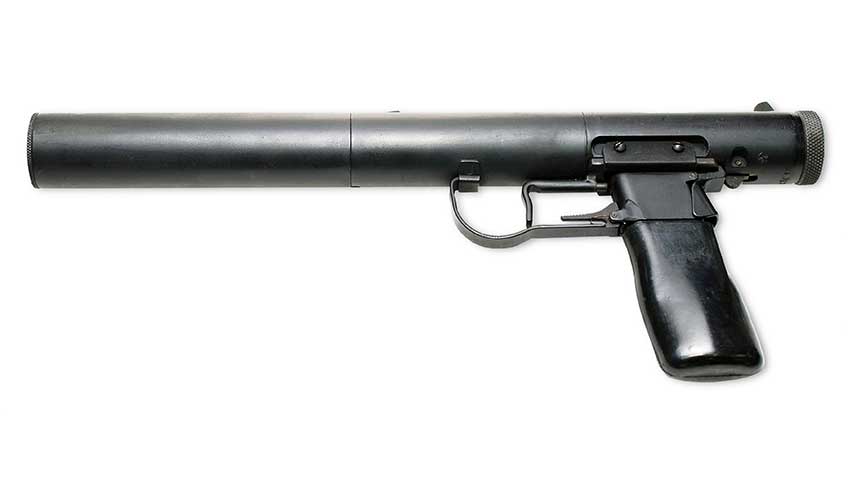
A special thanks to the Army Historical Foundation, which ran this article originally in the organization's quarterly journal, "On Point: The Journal of Army History." You can find more information about the Army Historical Foundation by visiting this link here.
Darkness shrouds the soldier stalking his target. To his front, an enemy sentry bars his team’s route into a well-guarded compound. The sentry is alert but unaware of the danger as the soldier raises a pistol, aims and slowly squeezes the trigger. There is a muffled report, no louder than a finger snap, and a hiss as gas escapes from the shrouded barrel. The sentry lies dead. All around silence reigns, the enemy remain oblivious to the impending attack. The pistol has done its job as the team rushes on to the objective to complete its destruction.
The above may sound like something from an action novel, but it’s not. It’s the description of a deadly tool used by both American and British forces since World War II, the Mark I Hand Firing Device also called the “Welrod.”
The Welrod was born in the creative workshops of Station IX, part of Britain’s Special Operations Executive (SOE) It was invented by a one of Station IX’s “mad” scientists, Major Hugh Q.A. Reeves, an engineer and inventor. This pistol was just one of his many inventions but it's perhaps the most deadly. It was given a code-name beginning with “Wel-” like all the devices developed at Station IX. The “Wel-“ was derived from the Station’s proximity to the village of Welwyn, about an hour north of London.
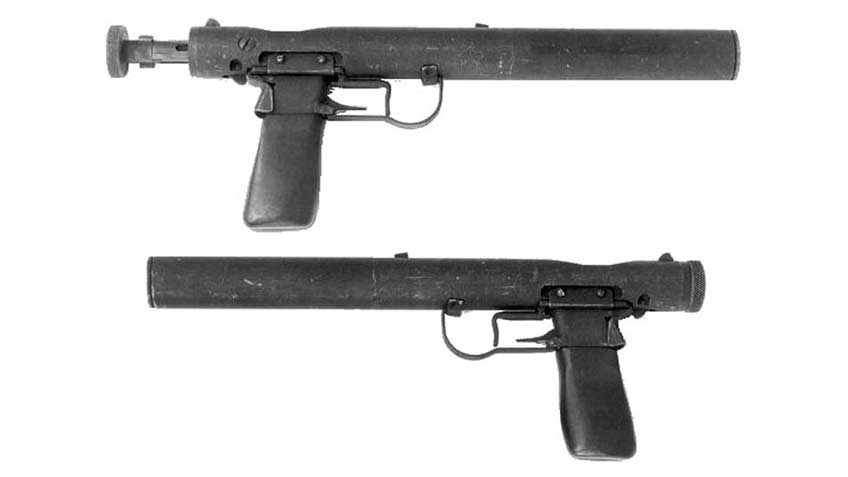
Station IX was established in 1940 to develop useful “toys” for the SOE. The SOE, known by its cover name: the Inter-Services Research Bureau (ISRB), was not only Britain’s espionage and sabotage organization during WWII, it served as the model for the United States’ Office of Strategic Services (OSS), the forerunner of the Central Intelligence Agency and the US Army Special Forces. Although the SOE and OSS usually operated separately, they also occasionally worked together in groups like the ‘Jedburghs’, which conducted guerrilla warfare with resistance groups in German-occupied Europe.
There was also much sharing of techniques and equipment. Seeing its deadly potential, the OSS picked up the Welrod early in the war. A Welrod was shipped back to the USA and from July through September 1943, the Naval Gun Factory at Washington Navy Yard investigated the weapon’s capabilities with Army and Marine Corps experts and accepted it for use in “special applications.” It’s official designation was "Hand Firing Device Mark 1” and, along with the .22 caliber suppressed High Standard HD Military (HDMS) pistol, it was used by the OSS throughout WWII.
The Welrod was, at the time, one of the few weapons designed specifically to be silent. The first model, ironically named the Mark II or Mark IIA, was chambered for .32 ACP ammunition and was used by the SOE and Danish underground. The later Mark I version was chambered for 9 mm Luger, as well as .32 ACP, and was adopted by the OSS. The weapon consists of a manually operated, single-shot firing mechanism with a barrel that is perforated with 16 to 20 holes drilled through. The barrel is surrounded by a metal tube containing an expansion chamber and a perforated metal ring, which leads to the silencer section consisting of 18 removable metal discs and rubber baffles. The rubber baffles permit the fired projectile to pass through but then close up behind it. The silencer section is designed to be a replaceable unit.
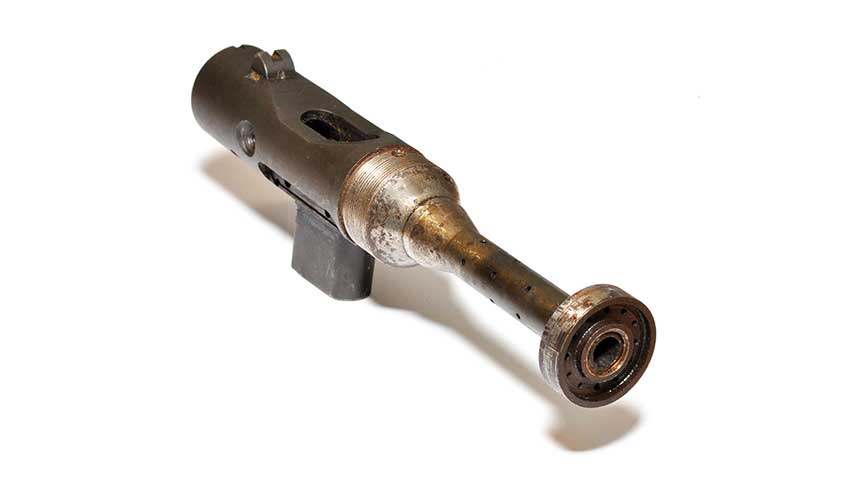
The pistol’s hand grip and magazine are integral and detach together from the gun completely, permitting the weapon to be better concealed. The firing mechanism is operated by a knob at the rear of the action, requiring the operator to twist the knob and pull the bolt to the rear. It is then pushed forward to strip a round from the magazine and feed it into the chamber. The knob is twisted 90 degrees clockwise, locking the weapon and enabling it to be fired. A simple grip safety blocks the trigger but not the firing pin. The pistol weight is 48 oz. with an overall length of 14.5.”
When a typical pistol is fired, the bullet is accelerated down the barrel by the burning propellant gases. Once the bullet exits the barrel, the gases expand and create the sonic wave we associate with the muzzle blast of a weapon. In a silenced weapon, the velocity of the bullet and the expansion of the gases are reduced and attenuated first by the silencer’s expansion chamber and then by the baffles prior to the bullet’s exit from the tube. The resulting muzzle blast is muffled drastically. The Welrod (.32 caliber version) is notable in that its muzzle blast has been recorded at only 73 dB, substantially lower than the unsuppressed 103 dB. The 9 mm has similar numbers.
Although the Welrod was meant to be used “up close and personally” it was effective to around 30 meters. After that, the reduced muzzle velocity and the short barrel began to take its toll on the bullet’s accuracy. The training manual noted that the weapon was best used “with the muzzle against the target.” It also noted that “no special training” was necessary for this maneuver. One would assume, however, that a great deal of nerve would be required.
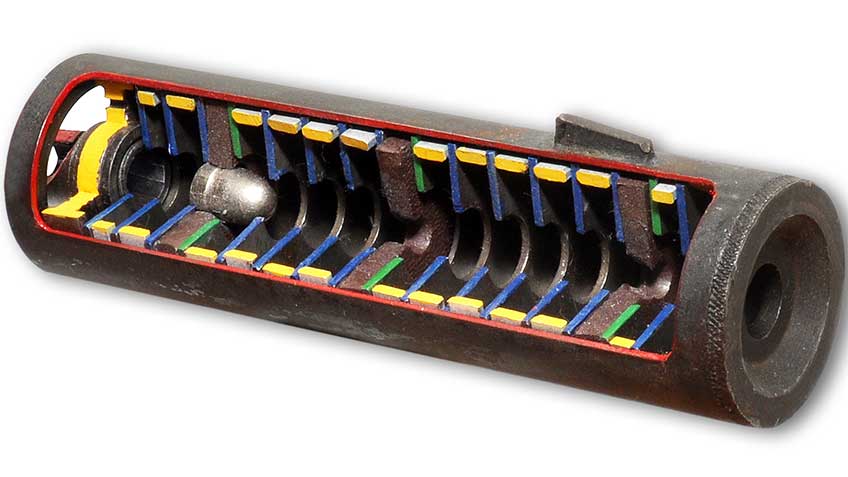
Production of the Welrod began in 1943, at the Birmingham Small Arms Company (BSA) factory with later production taking place at other factories throughout England. The exact number of pistols produced remains a mystery, although some historians believe that as many as 14,000 were made. Many were air dropped to resistance movements in Denmark and Holland.
When the weapon was tested by the U.S. military, the evaluators determined that the British had a superior design and that no time should be wasted on designing a U.S. version. It is known that the U.S. produced an unknown number of Welrods, some of which were built by Southwest Pump Company near Dallas, Texas.
Operationally, the weapon was carried by OSS and SOE operatives in Europe and Asia. It was also used by members of the underground to assassinate high-ranking German officers, particularly members of the notorious Schutzstaffel (SS). Following WWII, the pistol remained in the arsenals of the CIA and Army Special Forces. For years after the war the Welrod was listed among other interesting devices and tools that were available for special missions in classified CIA catalogs.
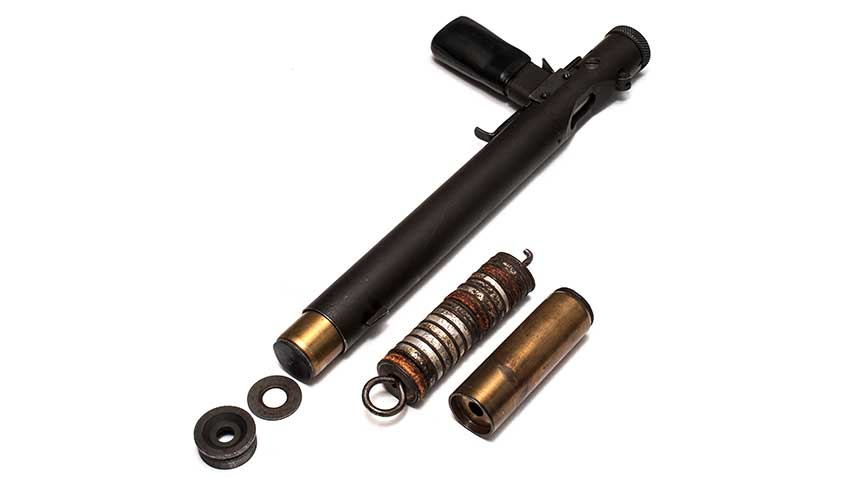
Both the Welrod and the High Standard were used extensively in Vietnam by the cryptically named US Military Studies Command Vietnam’s Studies and Observation Group (MACVSOG) as well as the US Army Special Forces. British Special Air Service veterans have intimated the Welrod was employed in the Falkland’s campaign and Operation Desert Storm.
It must be noted that, although the High Standard HDMS is somewhat louder than the Welrod (126 dB versus 73dB), it is capable of semi-automatic fire and more suitable for those situations where a quick second shot is likely to be necessary. The HDMS was especially useful for prisoner snatch missions. The routine was to ambush a Viet Cong or North Vietnamese Army patrol by wounding one member with the suppressed pistol and eliminating the rest of the patrol with conventional weapons, the idea being that the prisoner would provide valuable intelligence. The Welrod was the perfect weapon for the close-in one-round kill shot, perhaps on the street or in a cafe, thereby permitting the shooter to quietly escape. In other words, it was an excellent silent killer.
There was one other difference. Most Welrods were completely unmarked, a sterile weapon, theoretically untraceable to its originating country. The exception was one version, perhaps a testing prototype, that was marked “U.S. Navy” for some inexplicable reason. The HDMS is clearly marked “Property of the U.S. Government,” which would pose a problem of deniability.
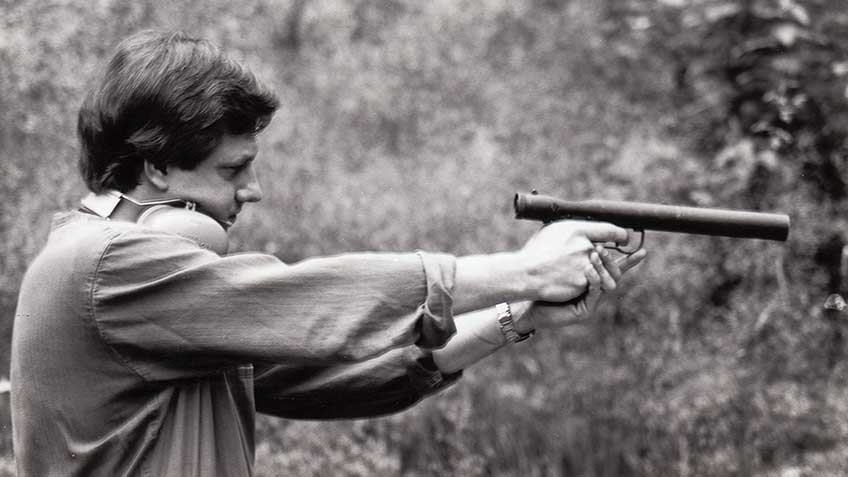
For that reason the Welrod ended up with an American unit in Berlin, in their arms room, and also buried in secret mission support sites (aka caches). The unit was a classified one, the U.S. Army’s 39th Special Forces Detachment (later known as the 410th). Until 1990 this unit kept the Welrod and the High Standard ready for a wartime mission behind Warsaw Pact lines, should the Cold War turn hot. The soldiers of Special Forces Berlin trained extensively in urban unconventional warfare and, along with more traditional albeit non-U.S. issue weapons, the Welrod was expected to be a crucial tool for their job.
The Welrod would have served to quietly dispatch senior enemy officers or guards who stood between them and their mission accomplishment. That mission never happened and the units’ existence was only recently declassified.
The Welrod's design blueprints however, remain classified in the United Kingdom to this day.
Related Reading
Cold-War Warriors: The Men and Guns of Special Forces Berlin





































